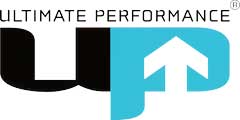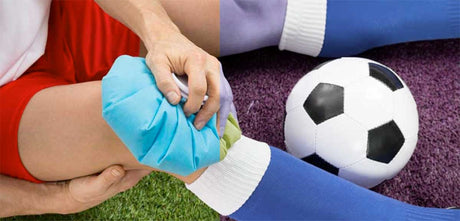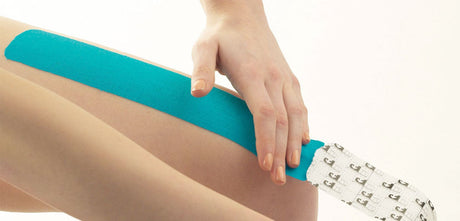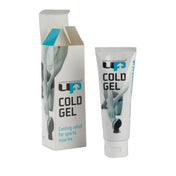What to include in your walking first aid kit? This is often a very personal thing, especially for experienced walkers. It is up to you to build your own kit based on personal needs and experience. However, there are a few basics we recommend.
Blister plasters
Blister plasters are essential for any walking first aid kit, not only treat but also prevent blisters. Catch blisters early by sticking a blister plaster over the area. A top tip is to warm the plaster up in your hands before applying. Once stuck properly they protect your skin from painful blisters more effectively than just tape.
Wearing socks for walking also helps prevent blisters. Our sister site 1000Mile.co.uk has a huge range of specialist walking and hiking sock.
Zinc oxide tape
Handy to carry for all sorts of purposes. Again, ideal for taping up your foot to protect your skin from blisters. Not only important for your feet, but also other areas where you skin rubs, for example, between your legs or over the nipples. Also useful for holding dressings in place and taping joints.
Cohesive wrap
This all purpose elastic bandage tears easily without needing scissors and sticks to itself, not the skin. As a result, this makes it ideal for strapping or compression joints such as ankle and knee sprains. Also great for holding dressings and cold packs in place.
Elastic wrap
An all purpose reusable elastic bandage. Great for supporting weak and injured joints and muscles. Great for knees, ankles, shin and calf, thigh and groin.
Foot powder
Essential for your walking first aid kit, especially if you are into long distance walking. Protecting your feet is essential and this means changing your socks regularly, especially if your feet get wet. Wet feet destroy morale faster than a letter from the tax man, causing painful blisters and other skin conditions such as Athlete's foot and Immersion foot.
Therefore every time you change your socks, make sure you dry them thoroughly with antibacterial foot powder.
Skin shield or Petroleum jelly
This is good to carry for a variety of purposes. Used in emergencies to protect your skin. Apply over a blister or chafing area for temporary relief. Of course, as your body warms the jelly it has a tendency to melt away. Therefore use it as emergency relief and re-apply as needed.
Also apply above your eyebrows to help prevent sweat dripping into your eyes.
Dressings
Use for treating cuts or lacerations and burns. Accidents do happen when crossing fences, gates and woodland, as well as injuries from knives and cooking stoves. Obviously be careful to avoid materials you are allergic to.
Extras for your walking first aid kit
Think about what else you might personally need. Do you need to take any specific medicines or other equipment? This might include Ibuprofen and Paracetamol (check with your doctor if unsure). Do you use an inhaler?
Other items might include spare socks, a sewing kit and emergency food for energy. If you want to get serious then a lost procedure card with emergency phone numbers, money should you need to make a phone call.















